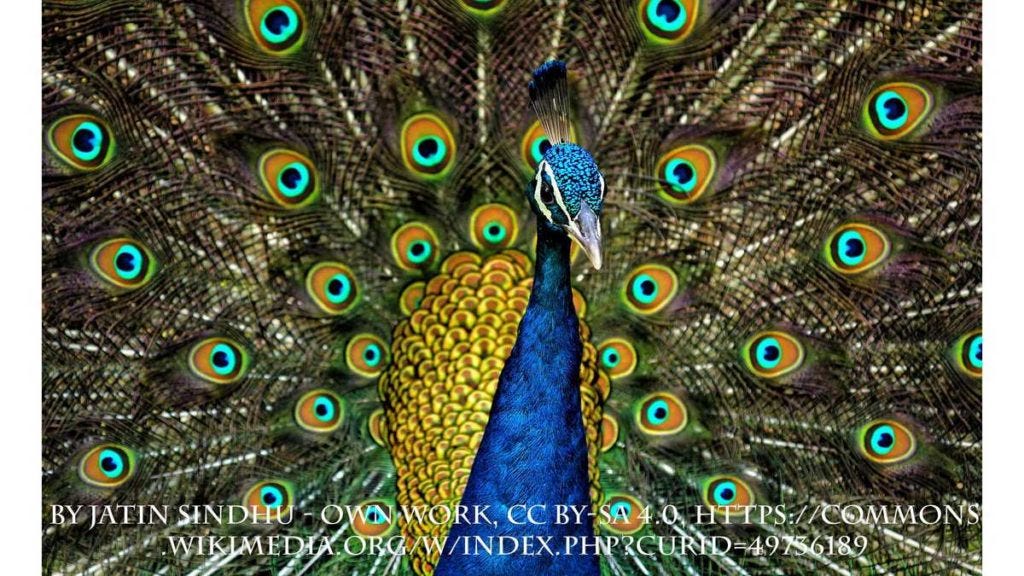Gender Sex and Sexuality
Perhaps surprisingly, gender seems to still be a mystery to many, so let me try to explain.
First of all, let's state what gender is not – it is not sex. Sex and gender are not synonymous. We might summarise it by saying 'gender is what gets us into bed and sex is what we do once we're there.'
Sex
Sex refers to a system of reproduction. In sexually dimorphic species, like us, there are two sexes. One has a system that produces a large, immotile gamete, or sex cell and the other a small, rapidly moving one. The former is called female and the latter male. The small gamete, called a sperm cell, carries an X or a Y chromosome. The larger one is called an ovum and, since these are produced in females, who only have X sex chromosomes, all ova are X. When the sperm and ovum come together, they produce a new individual with either XX (female) or XY (male) chromosomal sex or karotype. Thus, sex is fixed for life and cannot be changed.
Sex organs are the apparatus through which reproduction is effected. Males have organs designed to penetrate and females have organs designed to be penetrated. Usually, these are obvious at birth and in all but a few cases allow the chromosomal sex of the individual to be readily identified. The sex organs may be cosmetically reshaped through surgery, to mimic the appearance of those normally found on the opposite sex, but this is not a sex change.
The word 'sex' in English also refers to coition. Here it describes the physical activity in which two individuals bring their sex organs together, in order, usually, to deposit sperm inside the female and put it into contact with her ovum. It also refers to the act of penetration when carried out only for pleasure. Human coition is protracted greatly, when compared to that of other primates, which maximises its pleasurable and pair-bonding qualities. In addition, human females are sexually receptive all the time, even when already pregnant.
Coition is important to humans. It is not merely how we make babies, but also is instrumental in how we form bonds with each other and is important to our general mental well-being.
Sexuality
(In sexuality) activity is put into operation by the instinct for mastery through the agency of the somatic musculature (the body); the organ which, more than any other, represents the passive sexual aim is the erotogenic mucous membrane of the anus.
Sigmund Freud
Sigmund Freud (1856-1939), the 'father of psycho-analysis', considered that sexuality could not be understood in purely biological terms. It depended, for him, on how the individual desired to have sex. Activity is to desire to dominate and penetrate another, obviously enjoying the physical sensations, while passivity is the desire to have sensitive internal membranes stimulated by that, but also the psychological urge to submit to penetration. In Freud, 'activity' is male sexuality and 'passivity' is female. In fact he often used the terms interchangeably. This dichotomy is universal: sexuality, he said, 'manifests itself in a dualistic form: active and passive.' In other words, there are two sexualities, active/male, in which you seek to penetrate and passive/female, in which you seek to be penetrated.
Here, Freud accurately describes our sexual nature. Most males are active, that is, have male sexuality and most females are passive. For obvious reasons, in most cases, male sexuality implies a desire to penetrate females and an attraction to femininity, and female sexuality is the opposite. In other words, men are attracted to specific things about women, which identify them as suitable targets and vice versa.
For most of us, sexuality maps directly onto sex. That is because at the most basic level, for our reproductive imperative to be fulfilled, females must attract males, to fertilise their ova. But this is not absolute; sometimes sex and sexuality are inverted from what we might expect.
Where males have female sexuality, of course, penetration must be of an organ other than the vagina, which they don't have; and here Freud makes clear what is going on: female sexuality in males is the desire for 'the erotogenic mucous membrane of the anus' to be stimulated, by penetration.
Gender
One can speak of the male sex or the female sex, but one can also talk about masculinity and femininity and not necessarily be implying anything about anatomy or physiology.
Robert Stoller
Here, Stoller is developing Freud's distinction between sex and sexuality, but has added a crucial component: the outward expression of sexuality, or gender.
Humans show marked physical differences between the sexes, on a wide range of parameters and of course, most of us are attracted to the physical and behavioural attributes of the opposite sex. The primary focus of Sexual Selection is gender, that is, a set of appearances, behaviours and presentations which we categorise as 'masculine' and 'feminine', with other preferences being further down the line.
Arousal begins with a mental process, initially stimulated, most markedly in males, by vision. If that were not the case, then pornography could not work. We can't have sex with an image, so, if this were purely a physical issue, we would not find images of people sexually stimulating; but we do. This is a human thing; dogs do not get aroused by pictures of other dogs. Arousal is a function of our highly developed brains and so is a mental process.
Attraction is a two-way street. We are attracted, but we must also be attractive. This adds another dimension. How do we advertise what our sexuality is to prospective partners, that is, the ones we are attracted to? It is of absolutely no use for you to select your desired partner unless there is some way that such a person could know that you are sexually available and interested. Nobody can see inside your brain, so you need an external mechanism that communicates your sexuality.
Gender is the mechanism we evolved to accommodate this. Gender is innate and a product of sexuality; it serves to indicate to others the kind of partners we desire and also tells us whether another person is a suitable sexual target. At its most basic, feminine gender implies a desire for masculine partners, and so female sexuality, and vice versa.
Why gender?
The reason for this need is reproduction. We must mate with others, of the opposite sex, in order to make babies. Like all mammals, human females must attract males to place their sperm in proximity to the female's eggs, in order to fertilise them. This occurs deep inside her body and this in turn means that the sexual organs of male and female humans are markedly different.
Unlike other mammals, however, it is not possible to judge the state of oestrus of a human female by looking, because of her erect posture, nor by scent, as we just don't have good enough senses of smell. Gender is how humans got around this.
Birds and fish
To explain this, let's look at other parts of the animal Kingdom. Gender expressions, where they exist, are often rather obscure in mammals but in birds and fish they can be marked. In most avian species, the male is much more glamorous than the female. Consider pheasants, peafowl, even the little robin in the back yard. The boys are beautiful and eye-catching, the girls are dowdy. That is because boys need to attract the girls, but the girls need to hide from predators.
Birds also need to attract mates of the opposite sex, but here the roles are somewhat reversed. The males attract the females, through both plumage (anatomical) and courting displays (behaviours). Combined, these make up gender.
Interestingly, in birds it is not usually possible to judge the state of oestrus of the female by external observation. But it is also not possible to judge his state of arousal, except by the display. The male signals his readiness to mate and advertises himself through courtship displays, which are gender. They take no part in the physiological process of fertilisation.
Gender does not directly contribute to the process of fertilisation; it is instead a kind of enabler. It causes individuals of the appropriate sexes to come together and mate. Gender, therefore, is primarily a mating strategy. It doesn't involve the actual organs used for mating, which are often hidden but instead it offers a promise of those organs. It is a way to advertise what we have to others.
Variations and promises
Interestingly, some parts of human gender presentation can vary. For example, in some cultures, the males dress more flamboyantly than the females. This may be to do with the culture's concepts of modesty, or it might have to do with signalling that the man does not have to work manually – and therefore is wealthy and a good choice as a mate.
In humans, masculine gender suggests a functional penis, while feminine gender suggests female sexual receptiveness. In other words, the former promises a penis and the latter a ready vagina.
[caption id="attachment_20950" align="aligncenter" width="525"]
Cutest little peach on the tree, Leetus Thailand[/caption]
Note that attraction is therefore to gender and not to sex itself.
In some conditions in humans, people may present a gender which does not conform to the expectations for their sex. Males may appear in feminine gender and females in masculine. In males there are two principal causes for this, one being Sexual Inversion, in which the individual has a congenital variation which causes him to be both attracted to masculinity and to identify as feminine. The other is Autogynephilia, in which the male becomes sexually attracted to himself, as a woman. In females, Sexual Inversion will cause them to be masculinised, the typical butch lesbian, but here too there is another form, Autohomoeroticism, where the subject becomes besotted with the idea of being a 'gay man'.
Males also display another paraphilia, AutoAndrophilia, in which they fetishise themselves as masculine men. This gives us the 'clone' gay so popular today. Autogynephilia and Autoandrophilia in males break the normal link between sexuality and gender, because in the former, males who are attracted to women appear as women, and in the latter, males who are attracted to men appear as men.
At the same time, another form exists, principally in the West, in which feminine-appearing women attract each other. Again, this is a form of auto-eroticism and may be a female form of Autogynephilia.
In broad terms, then, gender is a function of sexuality such that those who desire men present in feminine gender and those who desire women in masculine, but there are auto-erotic conditions that can cause an apparent inversion in these links.
In practical terms, gender, refers to sets of physical attributes which are not directly involved in mating, for example in human females, breasts, buttocks and facial neoteny and in males the marked presence of body and facial hair, but also to sets of behaviours which tend to be sex-typical. The most obvious of these is that individually, men tend to be dominant and women submissive, but note that when in groups, women can become highly aggressive. Gender is therefore partly physical and partly performed; it is neither the one nor the other exclusively.
Because of the relationship to sex via sexuality, both of which are statistical binaries, there are only two genders, though how they are defined rather depends on where one is.
in brief
One final point to note is that gender cannot be chosen. It is innate and a function of sexuality, either in a straightforward manner or modified by one of several possible paraphilias. In the latter cases, any issues regarding inappropriate gender presentation or Gender Dysphoria can only be dealt with by identifying and addressing the particular paraphilia that is causing them.










